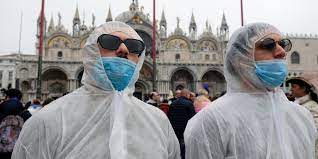Italy’s key pandemic parameters down for 4th consecutive week

Rome: All key parameters of the coronavirus pandemic in Italy have dropped for the fourth consecutive week, data showed.
The latest epidemiological survey carried out by the country’s National Health Institute (ISS) showed that the weekly incidence dropped to 672 cases per 100,000 inhabitants between Feb. 11 and Feb. 17, compared to 962 per 100,000 inhabitants in the previous week.
The report also showed that the country’s average reproduction number (Rt) was 0.77 between Jan. 26 and Feb. 8, down from 0.89 in the previous period.
An Rt below 1 means one infectious person would averagely transmit the infection to less than one other person.
Pressure on the public health system has also decreased, with an average rate of bed occupancy (by COVID-19 patients) on Feb. 17 of 10.4 percent in intensive care units, and 22.2 percent in normal wards. This was compared to the previous rates measured on Feb. 10 of 13.4 percent and 26.5 percent respectively.
The ISS said that 14 Italian regions are currently at low pandemic risk, another 5 at moderate risk, and 2 at high risk.
Anti-pandemic restrictions in the country remained at the lowest level in terms of movements of people and economic activities. However, the “super Green Pass” that proves vaccination or recovery from COVID-19, became mandatory for all workers aged 50 and above on Feb. 15.
This rule was passed in an effort to curb the impact of the Omicron variant, and push those still reluctant to get vaccinated.
Vaccination remains strongly recommended but not mandatory in Italy, except for some specific working categories, such as healthcare workers, school staff, military staff and police, as well as all workers over 50.
Nevertheless, Italy has one of the highest rates of vaccination in Europe so far, with over 47.9 million people, or some 88.8 percent of the population aged above 12, already fully immunized, according to the health ministry.





